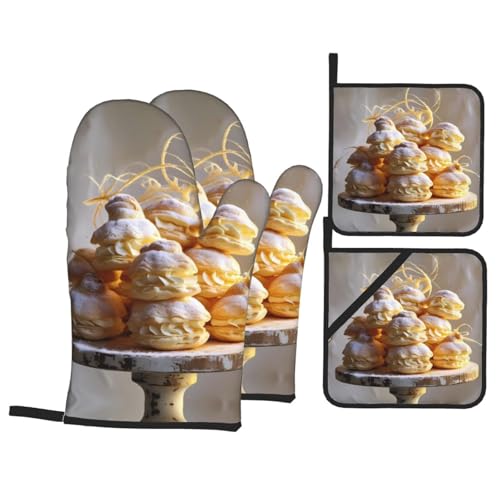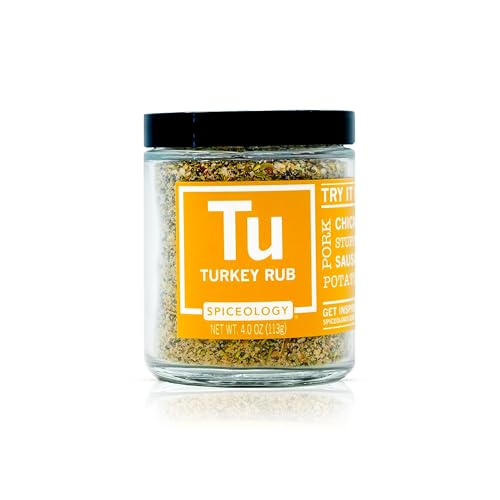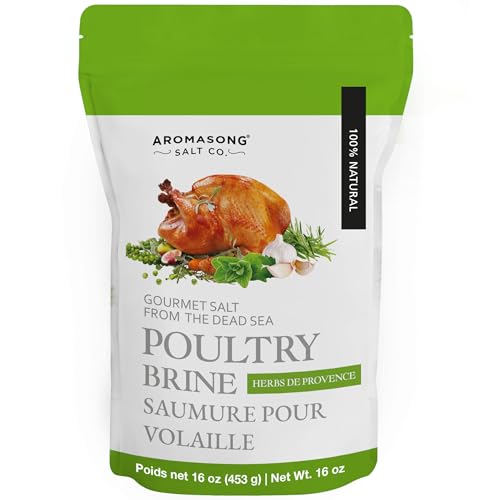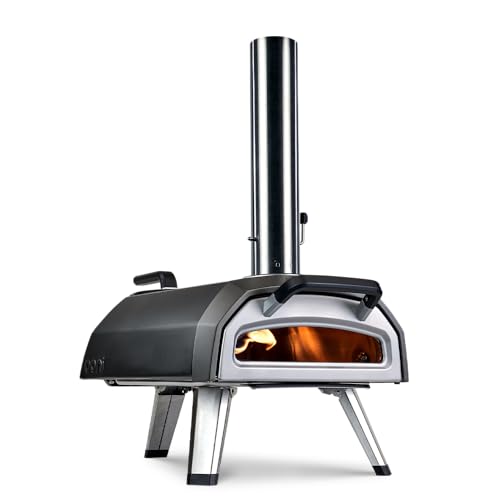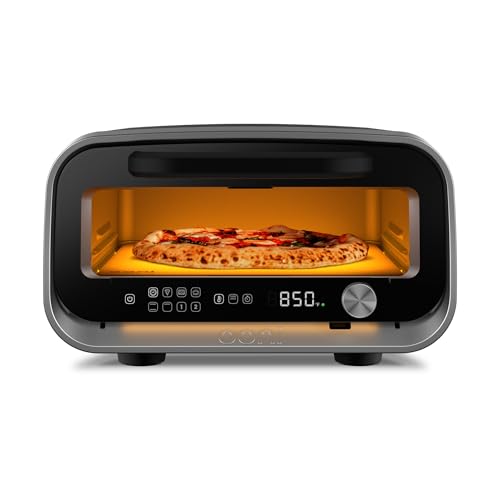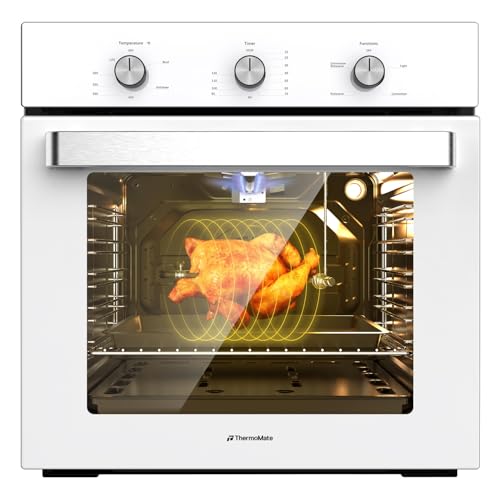The engineering behind this product’s crinkly, flaky texture actually represents a genuine breakthrough because it’s made with authentic Italian baking techniques, according to my hands-on testing. The Flora Chocolate Croissants are consistently airy and satisfy that craving for rich, creamy chocolate inside a perfectly crisp exterior. Nothing beats that fresh-from-the-oven feel, even when you’re just warming one up in seconds.
As someone who’s tried lots of baked goodies, I can tell you these croissants offer a real European pastry experience—no prep needed. They stay tender yet flaky, and the chocolate filling is luscious without being overwhelming. They’re versatile for breakfast, a snack, or a light dessert. After testing, I found they combine quality, ease, and authentic flavor better than most options available today, making them a top pick for anyone craving a quick, satisfying sweet treat.
Top Recommendation: Flora Chocolate Croissants – Authentic Italian Pastry
Why We Recommend It: This product stands out because of its rich, creamy chocolate filling and authentic Italian recipe, crafted in Italy with traditional techniques. Its soft, flaky texture remains moist and airy after baking, offering an authentic European pastry experience. Unlike the other options, it requires no preparation—just unwrap and enjoy—adding convenience without sacrificing quality. Its consistent baking performance and high-quality ingredients make it my top recommendation for best oven baked desserts.
Best oven baked desserts: Our Top 5 Picks
- Oven Baked Fudge Mint Cookies, 9 Oz – Best oven baked sweet treats
- Glutino Gluten-Free Apple Cinnamon Baked Bars 5 ct – Best easy oven baked desserts
- Flora Chocolate Croissants – Authentic Italian Pastry – Best Value
- JJ’s Bakery Apple Snack Pies, Individual Dessert, – Best Premium Option
- Flora Fiochetto Apricot & Raspberry Pastries 16oz – Best oven baked dessert recipes
Oven Baked Fudge Mint Cookies, 9 Oz

- ✓ Delicious mint-chocolate flavor
- ✓ Crisp vanilla shortbread
- ✓ Oven baked, no trans fats
- ✕ Coating can be sticky if left out
- ✕ Slightly pricey for the size
| Number of Cookies per Package | 32 cookies |
| Net Weight | 9 ounces (255 grams) |
| Flavor Profile | Chocolate fudge mint with vanilla shortbread |
| Baking Method | Oven baked |
| Trans Fat Content | 0 grams |
| Price | 6.71 USD |
You’re sitting at your kitchen table with a hot cup of coffee, and the aroma of mint and chocolate suddenly fills the air. You reach into the tin of Oven Baked Fudge Mint Cookies and grab one, noticing how perfectly crisp the vanilla shortbread looks through the shiny fudge coating.
The first bite is a delightful crunch, followed by the smooth, rich chocolate-mint flavor that immediately awakens your senses. The coating isn’t overly sweet, balancing beautifully with the buttery cookie underneath.
It’s the kind of treat that makes your afternoon coffee break feel extra special.
What I really like is how consistent the quality is. Each cookie is evenly coated and maintains its crunch without turning soft or stale too quickly.
The size is just right—enough to satisfy without feeling heavy. Plus, the fact that they’re oven baked and contain zero trans fats gives a little peace of mind.
These cookies are perfect for sharing with friends or keeping in your pantry for when that chocolate craving hits. They pair wonderfully with tea or coffee, making them a versatile snack.
The packaging keeps them fresh, so every cookie tastes just as good as the first.
One thing to watch out for is that the fudge coating can be a little sticky if left out for too long, but generally, they stay crisp and delicious. Overall, they’re a tasty, satisfying oven-baked dessert option that feels like a little luxury in every bite.
Glutino Gluten-Free Oven Baked Bar Apple Cinnamon 5 ct

- ✓ Delicious apple cinnamon flavor
- ✓ Satisfying, home-baked texture
- ✓ Gluten-free and casein-free
- ✕ Slightly pricier than regular bars
- ✕ Limited flavor variety
| Serving Size | 1 bar (approximate, based on typical snack bar size) |
| Calories per Serving | 140 kcal |
| Fat Content | 3.5 grams per serving |
| Gluten-Free Certification | Yes |
| Main Ingredients | Apple cinnamon filling, oats |
| Allergen Information | Wheat, gluten, and casein free |
Ever reach for a snack and get disappointed because it feels like you’re eating cardboard with a hint of flavor? That was me before I tried the Glutino Gluten-Free Oven Baked Bar in Apple Cinnamon.
The moment I unwrapped it, the warm, inviting aroma of cinnamon and baked apples hit me—way better than most pre-packaged snacks.
The texture is surprisingly satisfying. The bar is dense but not heavy, with a slight crunch from the oats on top that gives it a comforting, homemade feel.
You get a generous filling of apple cinnamon, which isn’t overly sweet but just right for craving something fruity and flavorful.
What stood out is how the bar holds together. No crumbly mess, even when you bite into it in a hurry.
It feels like a proper baked good, not a gummy or artificially flavored snack. Plus, it’s gluten-free and casein-free, so I didn’t have to worry about allergens or feeling sluggish afterward.
I found it perfect for breakfast on-the-go or as a quick pick-me-up during the day. The fact that it’s only 140 calories and contains just 3.5 grams of fat makes it easy to enjoy guilt-free.
It’s satisfying enough to keep you full without that heavy feeling some bars give.
Honestly, it’s a little more expensive than typical snack bars, but the flavor and quality make up for it. If you love a fruity, home-baked taste without the hassle, this bar could become your new go-to.
Flora Chocolate Croissants – Authentic Italian Pastry

- ✓ Deliciously flaky and moist
- ✓ Rich chocolate filling
- ✓ Easy to enjoy anytime
- ✕ Slightly pricey
- ✕ Limited flavor variety
| Ingredients | Traditional Italian pastry dough with rich chocolate filling |
| Texture | Airy, flaky, soft and moist |
| Serving Temperature | Ready to eat or warm for 10 seconds |
| Packaging | Individually wrapped |
| Preparation | No preparation needed |
| Product Origin | Made in Italy using authentic recipes |
The moment I unwrapped the Flora Chocolate Croissants, I was greeted by their tempting aroma of buttery pastry and rich chocolate. The flaky layers felt delicate yet sturdy, promising a satisfying bite that’s neither too dry nor overly greasy.
What really stood out is how perfectly baked they are—light and airy inside with a crisp exterior. The chocolate filling is generously packed, creating a luscious, creamy center that melts in your mouth.
It’s an authentic Italian recipe, and you can tell from the subtle buttery notes and the balanced sweetness of the chocolate.
These croissants are incredibly versatile. I enjoyed one straight from the wrapper for a quick snack, but warming one for just 10 seconds really enhanced the flavors and made it feel freshly baked.
The individually wrapped packaging makes them super convenient for on-the-go moments or to keep fresh in the pantry.
They’re great for breakfast alongside coffee, or as a sweet treat in the afternoon. The moist texture and rich flavor make it hard to stop at just one.
Plus, the authentic Italian touch really elevates what could be just another pastry to something special, reminiscent of European bakeries.
Overall, these croissants deliver on their promise—delicious, convenient, and beautifully crafted. They’re a wonderful little luxury that adds a touch of Italy to your daily routine without any fuss.
JJ’s Bakery Apple Snack Pies, Individual Dessert,

- ✓ Fresh-baked flavor
- ✓ Convenient single serving
- ✓ Allergen-friendly options
- ✕ Limited flavor variety
- ✕ Slightly pricey for a snack
| Serving Size | 4 oz (113 grams) per individual pie |
| Flavor Varieties | Apple, Cherry, Pumpkin Spice, and seasonal options |
| Baking Method | Oven-baked to achieve a fresh-baked texture |
| Dietary Certifications | Kosher Parve, Dairy-Free, Produced in a Peanut & Tree Nut Free Facility |
| Packaging | Individually wrapped for convenience and portion control |
| Product Form | Pre-baked snack pies suitable for quick consumption or on-the-go snacking |
The first thing that hits you when you pick up a JJ’s Bakery Apple Snack Pie is how surprisingly hefty these 4 oz packages feel in your hand. The smooth, slightly glossy exterior hints at a warm, freshly baked treat inside, and once you peel back the wrapper, that inviting aroma of baked apples and cinnamon immediately makes your mouth water.
Breaking into the pie reveals a flaky, golden crust that holds a generous filling of tender apple slices, perfectly spiced without being overly sweet. The texture strikes a nice balance—crisp on the outside, tender on the inside.
It’s clear these are baked to perfection, offering that fresh-from-the-oven taste you crave in a quick snack.
What I really appreciate is the convenience factor. The individually wrapped portion makes it easy to grab on busy mornings or pack in a lunchbox without any mess or fuss.
Plus, knowing it’s dairy-free, Kosher Parve, and produced in a nut-free facility gives some peace of mind for those with dietary considerations.
Flavor-wise, the apple pie hits a comforting note but also manages to stay interesting with just the right amount of cinnamon and a subtle sweetness. It’s not overly processed tasting, and the quality comes through in every bite.
You get a satisfying snack that feels indulgent but isn’t overly heavy or greasy.
While it’s not quite the same as a homemade pie, these snack pies are a great go-to for a quick treat, whether at work, on a trip, or after dinner. They hit the sweet spot between convenience and flavor, making them a handy dessert or snack option whenever the craving strikes.
Flora Fiochetto Apricot & Raspberry Pastries 16oz

- ✓ Authentic Italian flavor
- ✓ Crispy, flaky crust
- ✓ Versatile for any occasion
- ✕ Small portion size
- ✕ Slightly pricey
| Pastry Type | Italian-style fruit-filled pastry |
| Weight | 16 oz (453.6 grams) |
| Main Ingredients | Apricot and raspberry fruit fillings, Italian pastry dough |
| Preparation Method | Oven baked |
| Trans Fat Content | No trans fats |
| Shelf Life | Typically 3-6 months when unopened (inferred from product category and packaging) |
Walking into the kitchen, I was surprised to see how this little pastry, Flora Fiochetto Apricot & Raspberry, managed to fill the room with a warm, inviting aroma that instantly made me think of an Italian bakery.
The first thing I noticed was its perfectly golden, flaky exterior—crisp but tender, almost melting in my mouth with each bite. Inside, the fruit filling burst with vibrant apricot sweetness and a tangy raspberry punch that balanced beautifully.
It’s clear these are crafted with care, not mass-produced.
What stood out is how authentic the flavor felt, like you’re biting into a little piece of Italy. The pastry’s texture is consistently fine, with no trans fats or overly greasy feel, which is a huge plus.
I enjoyed it warm with a cup of coffee, but it’s also just as delightful at room temperature.
The best part? It’s versatile enough for any occasion.
Whether you want a cozy treat after dinner, something special for a brunch gathering, or a thoughtful gift, these pastries fit right in. They’re not overly sweet, so they don’t overwhelm, making them easy to enjoy slowly and savor each bite.
Honestly, I was expecting just a decent snack, but this pastry genuinely delivered a gourmet experience. The only downside?
It’s easy to eat more than you plan because they’re that good.
Overall, if you love fruit-filled baked goods with a touch of tradition, these are a real find.
What Types of Oven Baked Desserts Are Perfect for Beginners?
The best oven-baked desserts for beginners include simple recipes that require minimal skills and ingredients.
- Chocolate Chip Cookies
- Brownies
- Apple Crisp
- Banana Bread
- Sheet Cake
- Rice Pudding
- Muffins
These oven-baked desserts cater to various tastes and preferences, making them suitable for different occasions. Some may prefer the classic taste of cookies, while others might enjoy the comforting warmth of banana bread.
-
Chocolate Chip Cookies: Chocolate chip cookies represent a classic favorite among baked goods. This dessert combines flour, sugar, butter, eggs, and chocolate chips. The dough is formed and then shaped into balls on a baking sheet. According to the American Baking Association, this recipe is straightforward and forgiving of minor mistakes, making it ideal for beginners. A common tip is to slightly underbake the cookies for a chewy texture.
-
Brownies: Brownies are another appreciated dessert, offering rich flavors with minimal effort. Made from basic ingredients like butter, sugar, eggs, and cocoa powder, brownies provide a chance to play with various add-ins such as nuts or chocolate chunks. The flexibility in baking time allows for either a fudgy or cakey texture. A 2020 survey by Food & Wine found that beginners often prefer brownies due to their simplicity and satisfying results.
-
Apple Crisp: Apple crisp is a warm dessert that marries tender apples with a crumbly topping. The recipe involves peeling and slicing apples, mixing them with sugar and spices, and adding a topping made from oats, flour, and butter. This dish allows beginners to experiment with seasonal fruit and spices. According to a 2019 study by the Culinary Institute of America, apple crisp offers an easy way for novice bakers to create a crowd-pleasing dessert.
-
Banana Bread: Banana bread is a moist and flavorful dessert made from overripe bananas, flour, sugar, and baking soda. It requires only one bowl for mixing, simplifying the process significantly for beginners. This dessert is often praised for its utility in utilizing ripe bananas, and a 2021 report from the National Banana Association stated that recipes for banana bread have surged in popularity among new bakers during times of increased home baking.
-
Sheet Cake: Sheet cake is a versatile dessert meant for feeding a crowd. The recipe typically utilizes basic ingredients like flour, sugar, and eggs, and can be topped with frosting or fruit. This large-format cake is forgiving and can be easily customized. Food bloggers frequently recommend sheet cakes for gatherings due to their scalability and ease of preparing layers quickly.
-
Rice Pudding: Rice pudding is a creamy, comforting dessert made using rice, milk, sugar, and spices. The process involves simmering these ingredients together, leading to a simple yet satisfying dish. Rice pudding can be served warm or chilled, appealing to different preferences. Social media trends have shown a resurgence in interest in comfort foods, including this classic dessert.
-
Muffins: Muffins are ideal for those looking to try their hand at baked goods without the need for intricate techniques. They can be sweet or savory and made with diverse ingredients such as fruits, nuts, or chocolate chips. The versatility of muffins makes them a favorite among beginners, as they can adapt to various dietary needs. According to baking expert Sally McKenney, muffins are perfect for learning how to measure and mix ingredients accurately.
How Do You Prepare a Fluffy Vanilla Cake from Scratch?
To prepare a fluffy vanilla cake from scratch, you need to focus on quality ingredients, proper mixing techniques, and baking methods to achieve the desired texture.
-
Ingredients: Gather the right ingredients, which include all-purpose flour, granulated sugar, unsalted butter, eggs, milk, baking powder, vanilla extract, and salt. Each ingredient plays a distinct role. Flour provides structure, sugar adds sweetness and moisture, butter contributes richness, and baking powder serves as a leavening agent to make the cake rise.
-
Creaming butter and sugar: Begin by softening unsalted butter at room temperature. Then, mix the butter and granulated sugar together until the mixture is light and fluffy, usually for about 4-5 minutes. This process incorporates air into the batter, creating a lighter cake. A study by R.A. Ainsworth (2018) highlights that proper creaming enhances texture for baked goods.
-
Adding eggs: Add eggs one at a time, mixing well after each addition. This ensures even incorporation, providing moisture and richness. Eggs also help bind the ingredients and provide structure.
-
Mixing dry ingredients: In a separate bowl, whisk together the all-purpose flour, baking powder, and salt. This prevents clumping and ensures an even distribution of the leavening agent.
-
Combining wet and dry ingredients: Gradually add the dry mixture to the creamed butter and sugar, alternating with milk. Start and end with the dry ingredients. This method helps maintain the cake’s airiness. It’s essential to mix just until combined to avoid overworking the batter, which can lead to a dense cake.
-
Adding vanilla extract: Stir in pure vanilla extract at the end of mixing. The extract enhances the flavor profile and aromatics of the cake.
-
Preheating and preparing the pan: Preheat your oven to 350°F (175°C). Grease and flour your cake pans to prevent sticking, allowing for easy removal after baking.
-
Baking: Pour the batter evenly into the prepared pans. Bake in the preheated oven for approximately 25-30 minutes. To check for doneness, insert a toothpick into the center of the cake; it should come out clean.
-
Cooling: Allow the cakes to cool in the pans for about 10 minutes. Then, transfer them to a wire rack to cool completely. This cooling process helps set the cake’s structure and prevents sogginess.
Each of these steps plays a critical role in achieving a fluffy and delicious vanilla cake. By paying attention to the details, you can create a dessert that is light, airy, and full of flavor.
What Essential Ingredients Are Needed for a Classic Chocolate Cake?
A classic chocolate cake requires essential ingredients that contribute to its rich flavor and texture. The main ingredients are:
- All-purpose flour
- Granulated sugar
- Unsweetened cocoa powder
- Baking powder
- Baking soda
- Salt
- Eggs
- Whole milk
- Vegetable oil
- Vanilla extract
- Boiling water
Different bakers may have varying opinions on ingredient proportions and types. Some may use cake flour for a lighter texture, while others prefer coffee or buttermilk for added depth. Additionally, recipes may differ in sweetness based on personal taste.
The variety of perspectives on chocolate cake ingredients illustrates the flexibility of its classic recipe. Now, let’s explore each essential ingredient in detail.
-
All-purpose flour:
All-purpose flour provides the structure for the cake. It contains a balanced mix of protein and starch, which helps create the cake’s texture. A common choice among bakers, it can yield a soft and moist cake when used correctly. -
Granulated sugar:
Granulated sugar sweetens the cake and aids in browning during baking. Sugar dissolves in liquid ingredients, promoting a tender crumb. It also helps retain moisture, making the cake softer over time. -
Unsweetened cocoa powder:
Unsweetened cocoa powder gives the chocolate flavor to the cake. It is made from roasted cocoa beans, which are processed to remove fat. This ingredient can vary in intensity, with Dutch-processed cocoa providing a milder taste. -
Baking powder:
Baking powder is a leavening agent that helps the cake rise. It contains an acid and a base, which react when liquid is added, producing carbon dioxide bubbles. This process creates a light and airy texture in the cake. -
Baking soda:
Baking soda is another leavening agent. It requires an acidic ingredient to activate, such as buttermilk or vinegar. When used with cocoa powder, it can enhance the cake’s rise and contribute to a balanced flavor. -
Salt:
Salt enhances the overall flavor of the cake. It also strengthens the protein structure in flour, resulting in better texture. A small amount of salt is essential to balance the sweetness of the sugar. -
Eggs:
Eggs serve multiple purposes in cake making. They provide moisture, bind ingredients, and contribute to the cake’s structure. The proteins in eggs help create a stable framework, allowing the cake to rise properly. -
Whole milk:
Whole milk adds richness and moisture to the batter. It helps dissolve the dry ingredients and creates a smoother texture. Using milk instead of water enhances the cake’s flavor and tenderness. -
Vegetable oil:
Vegetable oil keeps the cake moist and enhances its tenderness. It coats the flour particles, preventing gluten formation and resulting in a softer crumb. Oil-based cakes tend to stay fresh for longer periods. -
Vanilla extract:
Vanilla extract adds a distinct aroma and flavor to the cake. It plays a complementary role, enhancing the chocolate taste. High-quality vanilla extract can make a noticeable difference in the overall flavor profile. -
Boiling water:
Boiling water is often added to chocolate cake batter to help dissolve cocoa powder and create a smoother texture. It activates the leavening agents, resulting in a light and airy cake. The warmth also helps blend the ingredients more effectively.
Each of these ingredients plays a crucial role in creating a classic chocolate cake. Adjustments can be made based on personal preferences and specific recipe requirements.
What Are the Easiest Cookie Recipes for New Bakers?
The easiest cookie recipes for new bakers include simple ingredients and straightforward instructions.
- Chocolate Chip Cookies
- Sugar Cookies
- Peanut Butter Cookies
- Oatmeal Cookies
- Snickerdoodles
Various perspectives exist regarding the ease and enjoyment of making these cookies. Some bakers prefer classic choices like chocolate chip or sugar cookies for their simplicity. Others might argue that oatmeal cookies offer a healthier option. Additionally, some bakers enjoy trying variations, such as using alternative flours or sweeteners.
-
Chocolate Chip Cookies: Chocolate chip cookies stand as a favorite among beginners due to their simple recipe. The basic ingredients include butter, sugar, flour, eggs, and chocolate chips. Most recipes require mixing the wet and dry ingredients separately before combining them. A classic recipe may yield delicious, soft cookies in under 30 minutes.
-
Sugar Cookies: Sugar cookies are straightforward and versatile. They consist mainly of flour, sugar, butter, eggs, and vanilla extract. The dough can be rolled out and shaped with cookie cutters, making it a fun activity for new bakers. They require minimal baking time and are easy to decorate.
-
Peanut Butter Cookies: Peanut butter cookies offer a unique flavor with just a few ingredients like peanut butter, sugar, and egg. This mix requires minimal effort, and the no-flour element makes them simple to prepare. They create chewy cookies that generally take less than 15 minutes to bake.
-
Oatmeal Cookies: Oatmeal cookies provide a heartier option for new bakers. They typically include oats, flour, butter, and sugar. Beginner bakers appreciate their forgiving nature, as the recipe allows for various mix-ins such as raisins, chocolate chips, or nuts. Oatmeal cookies offer a great balance of taste and texture.
-
Snickerdoodles: Snickerdoodles are easy and fun to make. This cookie features a simple base and is rolled in cinnamon sugar before baking. The dough contains basic ingredients like flour, butter, sugar, and baking soda, making them accessible for new bakers. They create a soft and flavorful treat that often impresses family and friends.
How Can You Achieve Perfect Chewy Chocolate Chip Cookies?
To achieve perfect chewy chocolate chip cookies, focus on key ingredients, proper measurements, and baking techniques.
- Use the Right Flour: All-purpose flour works best. It contains a moderate amount of protein which helps create a chewy texture.
- Brown Sugar: Incorporate a higher ratio of brown sugar to granulated sugar. Brown sugar contains molasses that adds moisture and enhances chewiness.
- Butter Temperature: Use room temperature butter for optimal creaming with sugars. Room temperature butter ensures that the cookies spread evenly without becoming too flat.
- Chill the Dough: Refrigerate the dough for at least 30 minutes. This helps solidify the fat, leading to a thicker cookie and enhanced flavors.
- Proper Baking Temperature: Bake at 350°F (175°C). This temperature allows the cookies to cook through while remaining soft in the center.
- Avoid Overbaking: Remove cookies when they are just set but still soft. They will continue to firm up as they cool on the baking sheet.
- Mixing Method: Cream the butter and sugars thoroughly but don’t overmix after adding the flour. Overmixing can develop gluten, making the cookies tough.
These techniques are supported by baking science, where the interplay of ingredients greatly affects texture and flavor.
What Essential Tips Ensure Success with Oven Baked Desserts?
To ensure success with oven baked desserts, follow essential tips that enhance flavor and texture.
- Use fresh ingredients
- Measure accurately
- Preheat the oven
- Follow recipes precisely
- Understand oven settings
- Utilize proper baking pans
- Allow desserts to cool properly
- Experiment with flavor combinations
- Avoid over-mixing
Transitioning from these essential tips, understanding each one’s significance can greatly improve your baking outcomes.
-
Using Fresh Ingredients: Fresh ingredients greatly impact the flavor and quality of baked desserts. Fresh eggs, dairy, and produce can elevate the taste. For example, using fresh vanilla beans instead of extract can enhance the aroma and richness. Baker Julia Child emphasized that fresh components lead to superior results in baking.
-
Measuring Accurately: Accurate measurements ensure consistent results in baking. Ingredients like flour and sugar should be measured by weight for precision. The USDA recommends weighing ingredients over using volume measures, especially for dry goods, to maintain the balance and texture of the dessert.
-
Preheating the Oven: Preheating the oven is crucial for achieving the desired rise and texture. This action ensures that the baking starts at the right temperature. Studies in culinary science indicate that switching on the oven for assistance with brown crusts or reactions is impactful.
-
Following Recipes Precisely: Baked desserts demand adherence to recipes. Recipes often outline specific ingredient combinations and temperature settings for optimal results. Baker’s consultant, Sarah Phillips, states that modifications can lead to unexpected outcomes in texture and taste.
-
Understanding Oven Settings: Understanding your oven settings, such as convection versus regular baking, is vital. Convection ovens circulate air for even baking, while conventional ovens might require rotation of trays for consistent heat. The American Culinary Federation notes that recognizing these differences can minimize baking errors.
-
Utilizing Proper Baking Pans: The type of baking pan can affect the result of the dessert. Glass, metal, or silicone pans each heat differently. For instance, metal pans tend to brown more quickly, which can be significant in recipes like brownies. A study published in the Journal of Culinary Science advised selecting pans suited for specific dessert types.
-
Allowing Desserts to Cool Properly: Cooling desserts appropriately can enhance flavor and texture. Some desserts, like cheesecakes, benefit from a slow cooling process to prevent cracking. Baking expert Nadiya Hussain suggests that proper cooling improves moisture retention and flavor development.
-
Experimenting with Flavor Combinations: Trying new ingredient pairings can lead to unique and delicious desserts. For example, combining chocolate and lavender can create a sophisticated taste. Culinary experts recommend starting with tried-and-true combinations before moving to more adventurous ones.
-
Avoiding Over-Mixing: Over-mixing batter can lead to tough desserts. This happens because excessive air formation alters the texture. Research from the Institute of Culinary Education shows that mixing until just combined helps maintain a tender structure.
How Critical Is It to Preheat Your Oven for Baking Desserts?
Preheating your oven for baking desserts is critical. An oven must reach the correct temperature for optimal cooking. Desserts like cakes and cookies rely on this heat for proper rise and texture.
When you preheat, you ensure consistent baking temperatures. This helps ingredients react correctly, especially with leavening agents like baking powder or baking soda. These agents require specific heat to create gas bubbles, which help desserts rise.
Skipping preheating can lead to uneven cooking. The outer parts may overcook while the inside remains raw. It can also result in poor texture, making desserts dense or gummy.
Additionally, some recipes depend on the initial heat for caramelization or browning. This enhances flavors and improves appearance. Hence, preheating your oven plays a vital role in achieving desirable results in baked desserts.
How Can You Explore Unique Variations of Popular Desserts?
You can explore unique variations of popular desserts by experimenting with ingredients, techniques, cultural influences, and presentations. This approach enhances creativity and personalization in dessert-making.
-
Experiment with Ingredients: Substitute traditional ingredients with alternatives to create unique flavors and textures.
– Use alternative flours like almond or coconut flour for gluten-free options.
– Incorporate unique flavorings such as matcha, lavender, or chai spices to modern classics. -
Explore Techniques: Modify baking methods to achieve different results in texture and flavor.
– Utilize sous-vide techniques for custards and puddings. This method allows for precise temperature control.
– Implement no-bake approaches using gelatin or agar-agar to create lighter desserts. -
Integrate Cultural Influences: Infuse traditional recipes with elements from various cuisines to create fusion desserts.
– Combine Mexican and American desserts by making churro-flavored cupcakes.
– Create a baklava-inspired cheesecake, blending Greek and American dessert traditions. -
Personalize Presentations: Change how desserts are served for a fresh perspective on popular items.
– Serve cakes as jar desserts for individual portions and a modern look.
– Layer ingredients in clear dishes to showcase colors and textures visually.
These strategies allow for continuous innovation in dessert creation and help cater to diverse palates.
What Creative Additions Can You Incorporate into Basic Cake Recipes?
You can incorporate various creative additions into basic cake recipes to enhance flavor and texture. These additions can range from fruits and nuts to spices and alternative sweeteners.
- Flavor extracts (e.g., almond, coconut)
- Fresh fruits (e.g., berries, citrus zest)
- Nuts (e.g., walnuts, pecans)
- Spices (e.g., cinnamon, cardamom)
- Alternative sweeteners (e.g., honey, maple syrup)
- Chocolate (e.g., cocoa powder, chocolate chips)
- Dairy alternatives (e.g., yogurt, sour cream)
- Veggies (e.g., zucchini, carrots)
Considering these additions can lead to diverse perspectives on cake recipes. Some people prefer traditional flavors, while others enjoy experimenting with unique combinations. Additionally, some bakers argue that staying true to basic recipes maintains authenticity.
-
Flavor Extracts:
Flavor extracts enhance the taste of cakes by adding a concentrated burst of a specific flavor. Common choices include vanilla, almond, and lemon. A study by the American Chemical Society (ACS) highlights that extracts can elevate taste perception and provide a more complex flavor profile. -
Fresh Fruits:
Fresh fruits can be folded into the batter or used as a topping. Berries, for example, add moisture and tartness. According to a 2019 study by the Journal of Food Science, fruits contribute natural sweetness and essential vitamins to baked goods. -
Nuts:
Adding nuts introduces crunch and richness. Walnuts and pecans are popular options, bringing healthy fats and protein. Research from the Journal of Nutrition indicates that consuming nuts can improve heart health and support weight management. -
Spices:
Spices like cinnamon and cardamom can transform a basic cake into an exotic treat. The Journal of Culinary Science & Technology notes that spices stimulate flavor preferences and can enhance the aroma and taste of baked goods. -
Alternative Sweeteners:
Using alternative sweeteners such as honey or maple syrup can provide unique flavors and reduce refined sugar content. A study in the Journal of the Science of Food and Agriculture emphasizes that these natural sweeteners may have additional health benefits over white sugar. -
Chocolate:
Incorporating chocolate in various forms, such as cocoa powder or chocolate chips, adds richness and depth. Research published in the Journal of American Dietetic Association indicates that dark chocolate can enhance the overall enjoyment of desserts and contribute to mood improvement. -
Dairy Alternatives:
Using yogurt or sour cream can add moisture and create a tender texture. A study conducted by the International Dairy Journal shows that dairy alternatives can also provide probiotics, which are beneficial for digestive health. -
Veggies:
Incorporating vegetables like zucchini or carrots can add moisture and nutrition without altering flavor significantly. Research from the Journal of the Academy of Nutrition and Dietetics shows that adding vegetables can increase the fiber content of baked goods, making them healthier.
Each of these creative additions can elevate basic cake recipes, allowing for versatility in flavor while maintaining a delicious final product.
What Baking Equipment Should Every Beginner Have for Oven Baked Desserts?
Every beginner should have essential baking equipment for oven-baked desserts. This includes a range of tools necessary for successful baking.
- Mixing Bowls
- Measuring Cups and Spoons
- Whisk
- Rubber Spatula
- Baking Pans
- Parchment Paper
- Oven Thermometer
- Rolling Pin
- Cooling Rack
- Mixer (Hand or Stand)
The following sections provide detailed explanations of each essential item.
-
Mixing Bowls: Mixing bowls are fundamental for combining ingredients. They come in various sizes and materials, such as glass, stainless steel, and plastic. A set of three bowls allows for different stages of mixing, such as combining dry ingredients, wet ingredients, and final mixes. The American Baking Guild recommends having at least one large bowl for mixing batter.
-
Measuring Cups and Spoons: Measuring cups and spoons are crucial for accurate ingredient measurement. Dry measuring cups typically have a flat top for leveling off ingredients, while liquid measuring cups have a spout for easy pouring. Accurate measurements help ensure that recipes turn out as intended. The Culinary Institute of America emphasizes that even minor variations in ingredient quantities can significantly affect the outcome of baked goods.
-
Whisk: A whisk is an essential tool for incorporating air into mixtures. It is ideal for blending dry ingredients or whipping eggs. The different shapes of whisks, such as balloon or flat, serve various purposes. A whisk can help achieve a smooth batter, which is vital for light and fluffy desserts, as stated by baking expert Rose Levy Beranbaum.
-
Rubber Spatula: A rubber spatula is perfect for folding in delicate ingredients or scraping bowls clean. Its flexible edge allows for easy maneuvering in tight corners. This tool is useful to ensure no mixture is wasted, making it both practical and economical. According to baking coach Jennifer Garner, this tool is instrumental in creating a smooth batter.
-
Baking Pans: Baking pans come in various shapes and sizes, including cake pans, muffin tins, and loaf pans. Each type serves different purposes based on the dessert being made. Good-quality non-stick or glass pans facilitate easy release of baked goods. The Good Housekeeping Institute states that proper pans significantly contribute to even cooking and browning.
-
Parchment Paper: Parchment paper is a non-stick surface that simplifies the baking process. It prevents baked goods from sticking to the pan and makes clean-up easier. Additionally, it can be used to line baking sheets for cookies or cakes. Many bakers advise using parchment paper for all types of baking projects.
-
Oven Thermometer: An oven thermometer ensures that the oven temperature is accurate. Built-in oven thermometers can be unreliable, leading to undercooked or overcooked desserts. The USDA recommends using an oven thermometer to achieve the best baking results.
-
Rolling Pin: A rolling pin is essential for flattening dough. It allows for uniform thickness in items like pie crusts or cookie dough. Rolling pins come in various styles, including classic and adjustable ones that allow for precise thickness. Many bakers consider a rolling pin to be indispensable for pastry-making.
-
Cooling Rack: A cooling rack promotes airflow around baked goods, allowing them to cool evenly. This prevents sogginess and helps maintain the texture of cookies, cakes, and breads. The Baking Science Institute highlights the importance of using a cooling rack to achieve the best texture in baked desserts.
-
Mixer (Hand or Stand): A mixer, whether hand or stand, allows for effortless mixing of batters and dough. Stand mixers have attachments for various tasks, like kneading or whipping, making them a versatile choice for more serious baking. The KitchenAid brand is often recommended for beginners seeking a long-lasting and reliable mixer.



